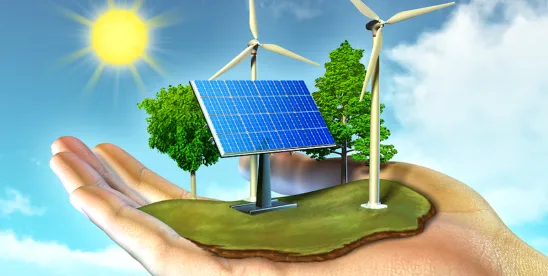There is a lot of buzz around clean technology, distributed energy resources (DERs), microgrids, and other technological innovations in the renewable energy and clean transport industries and how these developments can contribute to solving longstanding environmental justice issues. As these innovations develop, energy markets will undergo substantial changes to which consumers and industry participants alike will need to adapt and leverage. Every other week, K&L Gates’ The Energizer will highlight emerging issues or stories relating to the use of DERs, energy storage, emerging technologies, hydrogen, and other innovations driving the energy industry forward.
DEPARTMENT OF ENERGY ANNOUNCES US$25 MILLION IN FUNDING TO STUDY CLEAN HYDROGEN FOR ELECTRICITY GENERATION
On 19 May 2022, the U.S. Department of Energy (DOE) awarded US$24.9 million dollars of total funding to six private-sector companies to study the feasibility of hydrogen for electricity generation. Specifically, the partnership serves as a driver in the research and development of advanced technologies to increase hydrogen availability and efficient fuel use in electricity generation.
One of DOE’s goals is to make energy sources—like hydrogen—more affordable and accessible, thereby advancing the goal of decarbonizing the U.S. electric grid. DOE’s National Energy Technology Laboratory will manage the six hydrogen research projects that received funding. Those projects include a study of a hydrogen production plant by 8 Rivers Capital, LLC; a study of the use of ammonia-hydrogen fuel mixtures in gas turbines by Gas Technology Institute; two studies by General Electric on the use of hydrogen or hydrogen-mixtures to power electric generating turbines; and two studies by Raytheon Technologies Research Center on the use of different hydrogen mixtures as a fuel source for electric generating turbines.
DEPARTMENT OF ENERGY ANNOUNCES US$3.5 BILLION CARBON CAPTURE PROGRAM
On 19 May 2022, DOE released a Notice of Intent to fund the Regional Direct Air Capture Hubs Program (RDACH or the Program), a US$3.5 billion carbon capture program authorized by the Infrastructure Investment and Jobs Act (commonly known as the Bipartisan Infrastructure Bill). The Program will contribute to the development of four large-scale, regional direct air capture hubs that will each in turn support a network of projects that will capture and store carbon dioxide directly from the air.
These direct air capture projects are a cornerstone of the Biden administration’s efforts to reduce greenhouse gas emissions by 50 – 52 % from 2005 levels by 2030. DOE anticipates that the will have the capacity to capture and permanently store at least one million metric tons of carbon dioxide from the atmosphere annually, either from a single unit or from multiple interconnected units. DOE also hopes the hubs can eventually be developed into a regional or interregional carbon network to facilitate further carbon sequestration and/or utilization.
To be selected for RDACH, projects will have to demonstrate the delivery and storage or end use of removed atmospheric carbon. Project applications will be evaluated against several criteria including scalability, employment potential, and location in a carbon-intensive area. DOE also indicated that, in the development and deployment of the regional hubs, it will emphasize environmental justice, consent-based siting, equity and workforce development, and domestic supply chains and manufacturing.
HAWAI‛I LAWMAKERS CONSIDERING A CAP ON RENEWABLE ENERGY
Hawai‛i lawmakers are on the cusp of approving a bill with large-scale implications for renewable energy in Hawai‛i. In May 2022, the Hawai‛i legislature passed S.B. 2510, Relating to Renewable Energy (the Bill). The original language of the Bill proposed a requirement that each island generate at least 55% of its renewable energy from “firm renewables,” or those generation resources capable of producing energy continuously (e.g. biomass facilities).
In light of interest group pushback from various entities including utilities and solar energy advocates, the House Energy and Environmental Protection Committee’s (EEPC) chair led a unanimous committee vote to amend the prescriptive language. During a closed-door session, EEPC amended the Bill to include a new requirement that reduces the firm renewable mandate and includes a cap on renewables. S.B. 2510 now provides that each island must use firm renewables for one-third of its renewable portfolio, reduced from the previous 55% mandate. Other power sources, like petroleum or solar, would be capped at 45% of each islands’ total energy portfolio. S.B. 2510 is now headed to Hawai‛i Governor David Ige for his signature.
David Wang also contributed to this article.






 />i
/>i

